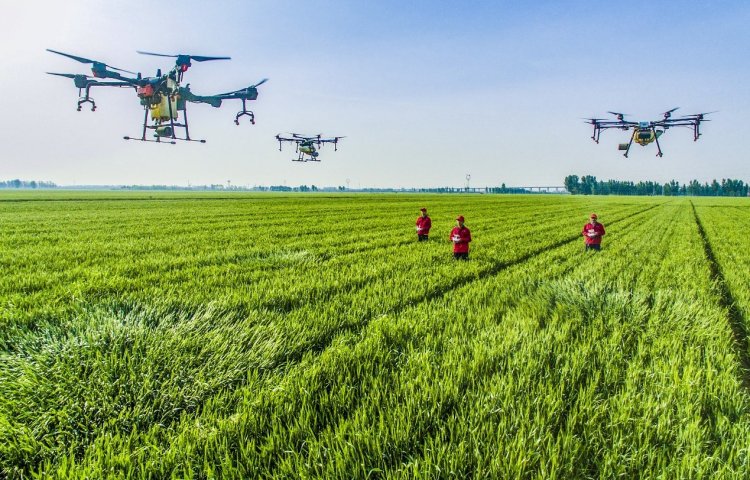At present, it is a critical period for rice field management and a high incidence period of diseases and pests. Gangbei District, Guigang City, Guangxi Province, vigorously promotes the “flying prevention” operation of plant protection UAVs, and precisely applies pesticides, combining green prevention and control with the rule of unified prevention, to ensure high grain yield and farmers’ income.
A few days ago, in the contiguous paddy fields in Qingfeng Town, Gangbei District, Guigang City, accompanied by bursts of motor roar, under the remote control of technicians, the plant protection UAV loaded with pesticides flew over the paddy fields at low altitude, and the huge airflow under the rotor impelled the pesticide mist flow to evenly spray on the grass leaves. It is understood that plant protection drones can complete the “fly defense” operation of one acre of rice field in just one minute. One drone can work on an area of over 200 acres per day, which is more than 20 times the efficiency of manual spraying and can reduce pesticide use by more than 30%. Compared to manual spraying, plant protection drones are more efficient, safe, economical, and environmentally friendly.
The efficient and efficient drone defense for plant protection demonstrates the “technological style” of field management, and the control effect is far superior to manual control, which has been recognized by more and more rice growers. Huang Shuncheng, a grain grower in Qingfeng Town, Gangbei District, said, “This year he planted 130 acres of rice, all using plant protection drones for ‘flying defense’. The cost is lower than manual spraying, and the control effect is good
Rice planthoppers, borers, leaf curlers and Sheath blight of rice are one of the important diseases of rice. Replacing the traditional field management with the “flying prevention” of plant protection UAVs, it not only effectively improves the efficiency of disease and insect control, reduces the use of pesticides and control costs, but also helps farmers solve the problem of labor shortage, laying a solid foundation for food production and harvest.







Please sign in to comment
register